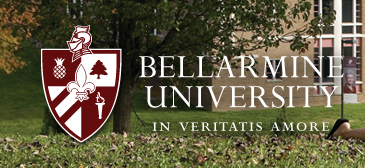Date of Project
5-10-2021
Document Type
Honors Thesis
School Name
College of Arts and Sciences
Department
Biology
Major Advisor
Dr. Steven Wilt
Second Advisor
Dr. Paul Kiser
Third Advisor
Dr. Caroline Doyle
Abstract
This study investigates the expression of Palladin, a phosphoprotein product of the PALLD gene, in the retinal pigmented epithelium (RPE). Palladin is an actin cross-linking protein and plays a role in cell adhesion and motility. Published reports have demonstrated that a down regulation of Palladin in colon cancer cells results in a reorganization of the actin cytoskeleton, causing the cells to lose their typical shape, become proliferative and migratory. This process is otherwise known as epithelial-mesenchymal transition (EMT). A similar EMT phenomenon is observed when the RPE is exposed to the vitreous humor in patients with proliferative vitreoretinopathy (PVR). In this study, the expression of Palladin is investigated in primary cultures of pig retinal pigmented epithelium in both normal and vitreous exposed cells. Reverse transcription polymerase chain reaction (RT-PCR) and western blotting were performed to demonstrate mRNA and protein expression, respectively. Palladin was seen expressed in the RPE cells; however, there was no notable difference in the expression of Palladin mRNA in vitreous exposed cells versus the control cells. The immunoblotting analysis was inconclusive. More research will be necessary to see if Palladin plays a role in the RPE.
Recommended Citation
Powell, Katrina, "Search for Palladin, an Actin-Associated Protein, in Pig Retinal Pigmented Epithelium and its Role in Epithelial-Mesenchymal Transition" (2021). Undergraduate Theses. 74.
https://scholarworks.bellarmine.edu/ugrad_theses/74
Included in
Biological Phenomena, Cell Phenomena, and Immunity Commons, Biotechnology Commons, Cell Anatomy Commons, Cell Biology Commons, Eye Diseases Commons, Laboratory and Basic Science Research Commons, Medical Cell Biology Commons, Molecular Biology Commons, Optometry Commons, Structural Biology Commons
